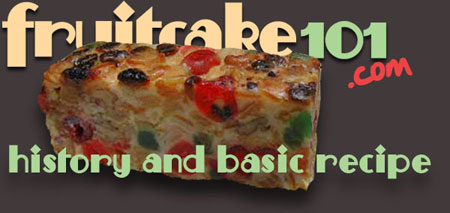
Apparently, the history of fruitcake dates back to the Ancient Egyptians and the Ancient Greeks. I find this absolutely believable. Last Christmas, someone gave me a fruitcake that I was tempted to bring in for carbon dating.
Speaking of which, in the Middle East, dates, and various types of nuts might have packed a fruit cake. In Greece, pomegranates may have provided the main fruit.
Fruitcake enjoyed popularity in the Middle Ages because obtaining fruit in the wintertime was difficult. Yet dried fruits would plump up in the cooking process.
Also, the cakes were often soaked with alcohol* to keep them preserved.
*Research has found that people who have been soaked in alcohol prior to eating fruitcake have found eating fruitcake more tolerable.
a basic fruitcake recipe
Two loaves . Serves... I don't know - possibly up to 300?
Ingredients
14 ounces sweetened flaked coconut
8 ounces chopped sugar rolled dates
16 ounces pecan pieces
8 ounces candied cherries
8 ounces diced candied pineapple
2 (14 ounce) cans sweetened condensed milk
Directions
1. Place coconut, dates, and pecan pieces in a very large (7 quart or larger) bowl. With your hands break up chunks of dates & coconut, and stir those 3 ingredients together.
2. Add the cherries, pineapple, and sweetened condensed milk. Stir thoroughly. (I wear non-powdered surgical gloves, and stir it with my hands because the mixture is very stiff.).
3. Let set at room temperature while you prepare the pans. Spray two - 9"x5" loaf pans with Pam® or other non-stick cooking spray. Line the pans with waxed (or parchment) paper. (We cut parchment paper in four 1/4"x 16 1/4" strips for this. You want the paper to come up past the short sides of the pans after the mixture is packed into the pans.) Now spray the paper (after you've pressed it into the pans) with a spray shortening.
4. Stir the ingredients well again. Divide the ingredients equally between the two loaf pans.
5. Pack VERY TIGHTLY and smoothly into the pans. (I wet my hands & press, pack down, & smooth top, using both hands. Wetting your hands keeps them from sticking to "batter".).
6. Place the pans on the middle rack of the oven and bake at 300 degrees F for 1 hour, or until lightly browned. (If the cakes have baked for an hour, or look a little brown around the edges, take them out of the oven & lift edges of paper a little to see if sides look brown enough. If they're brown on sides, but not on top, you may broil the tops for a few minutes-watch carefully.).
7. Remove cakes from oven and let cool for 10 minutes in the pans.
8. Gently lift the edges of the paper a couple of times on each side - kind of a rocking motion. Turn pans upside down onto a paper-lined cookie sheet. Lift pans from the cakes. Remove paper from bottom of cakes IMMEDIATELY.
9. Let cool completely. Place in a large container (don't wrap yet) and refrigerate overnight.
10. Turn cake upside down to slice. After slicing, wrap in waxed (or parchment) paper, then in heavy duty aluminum foil.
11. May be refrigerated up to 3 months or frozen up to 1 year.
12. Throw away. Or give as a gag gift with a copy of our book, "Fruitcake 101."
Do you have a favorite fruitcake recipe that you'd like to share with us? Click to our submit page for submission instructions.
Please note that by emailing your submission you understand that your fruitcake use (and or recipe) may be used in electronic and print media by Octane Creative (Tim Nyberg Creative, Inc.) without any compensation. All materials on this site are © 2008 by Tim Nyberg Creative, Inc., dba Octane Creative, Sturgeon Bay, WI 54235
